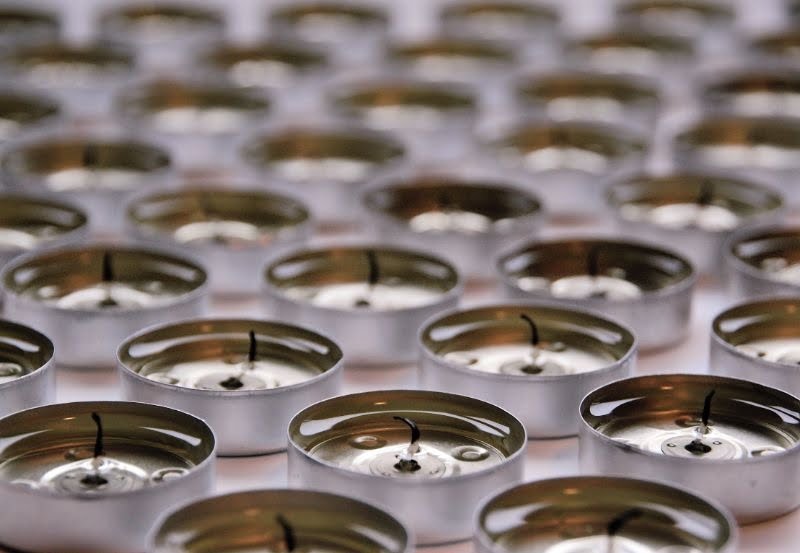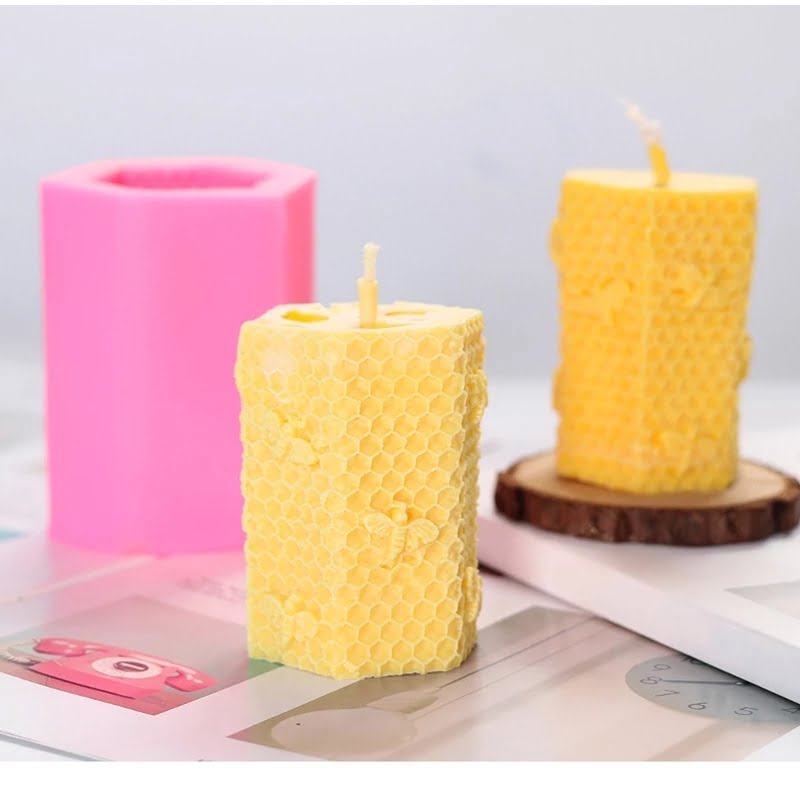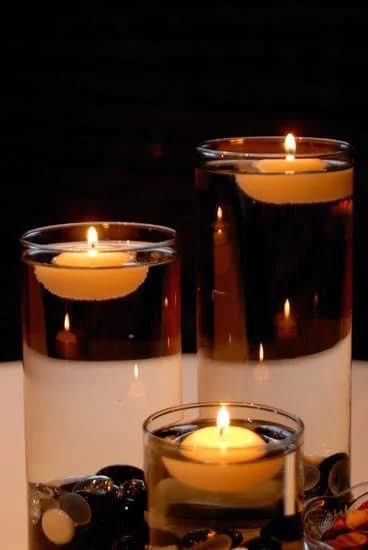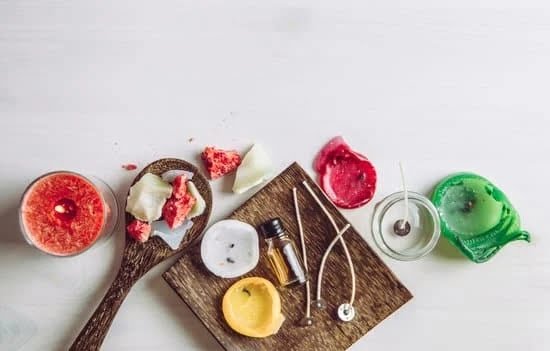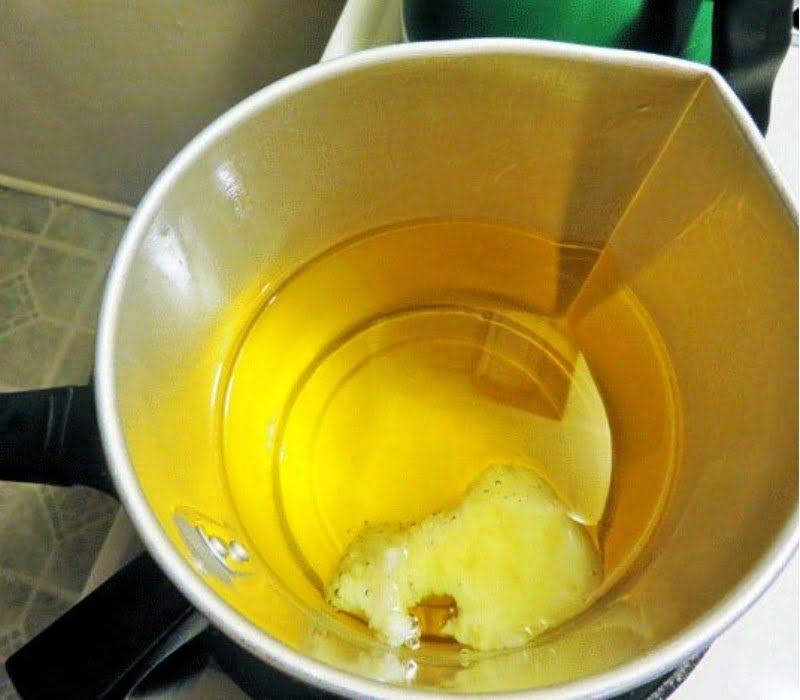Introduction
Essential oils are a great way to add a unique touch to handmade candles. With the right combination of oils, you can create beautiful scents that will have everyone in your household asking where the pleasant smell is coming from. When used in candle making, essential oils provide many benefits such as long-lasting scent, natural insect repellent, and health benefits due to its powerful therapeutic properties.
Essential oils work wonders when added to candles because of their concentrated natural fragrance. The aroma from essential oils is much longer lasting than synthetic fragrances used in store-bought candles. Furthermore, since essential oil fragrances are natural based, they tend to be milder yet stronger than synthetic smells. Depending on how much essential oil you use in your candles, he intensity of the scent will vary – this allows for fine tuning the power of your candles’ scent.
The versatile nature of essential oils also means that they can be used to keep pesky insects away from home without having to use powders or liquids like other pest control solutions. Simply add several drops of citronella oil or lemongrass oil into your candle making mixture and light it up when outside entertaining guests. This creates an effective way to help repel insects like mosquitos while still enjoying a lovely evening outdoors.
Finally, essential oils can have the potential for both relaxation and rejuvenation effect due to their powerful therapeutic properties derived from plants and flowers found throughout nature. Add calming lavender scents or invigorating peppermint aromas into your candle mixture and depending on which type you choose it could have either one of these effects when burning around your living space each day. To maximize benefit from using essential oils with candles, try experimenting with different combinations until you find the perfect balance for your home environment!
Overview of Different Types of Essential Oils
Essential oils are incredibly powerful and fragrant compounds extracted from plants. They can be used in a variety of ways, including candle making. When added to a wax or oil base, they are capable of releasing an amazing range of aromas and providing therapeutic benefits such as improved moods, increased energy levels, better sleep, and even anti-anxiety effects.
Popular essential oils that can be used for candle making include lavender, peppermint, rosemary, eucalyptus, lemon, orange, bergamot, ylang-ylang and tea tree oil. Each oil has its own unique set of characteristics that make it ideal for various kinds of candles. For example:
• Lavender oil is considered calming and is often used in relaxation candles;
• Peppermint has been known to help with focus and concentration while also providing an invigorating freshness;
• Rosemary can boost alertness as well as having antiseptic properties;
• Eucalyptus is thought to have antibacterial properties and is often seen in natural cleansers;
• Lemon stimulates the body giving it more energy;
• Orange helps with depression and improves a feeling of wellbeing;
• Bergamot lifts the spirit and opens up a sense of optimism;
• Ylang-ylang is used for calming purposes but can also aid in balancing hormones;
• Tea tree oil has anti-inflammatory effects which makes it effective against aches and pains.
In addition to their therapeutic benefits, essential oils also add great fragrance to any candle because they come naturally fragranced by plants ” meaning you don’t have to continuously re-scent your candles like you would with synthetic fragrances. For best results when adding essential oils to your candles make sure that the base you’re using already contains some kind of scent carrier so that all the scents mix properly together. Keep in mind that each type of essential oil releases its own unique smell so be sure to experiment until you find the perfect combination!
Best Essential Oils for Different Types of Candles
Aromatherapy candles are an excellent way to enjoy the benefits of essential oils while also creating a calming atmosphere. Depending on the type of candle you’re making, different essential oils will produce different effects.
For relaxation, some of the best essential oils to use are lavender and chamomile ” both have relaxing qualities that make them perfect for candles such as bath and bedroom varieties. Bergamot, cedarwood and rose can all help reduce stress and create a sense of calmness in the air.
If you’re trying to energize a space with refreshing scent, then lemon, grapefruit, eucalyptus and peppermint are ideal choices. All four scents carry a bright energy that will revitalize an atmosphere quickly upon burning them in candles in the living room or office.
Last but not least if you find yourself needing to make anti-bacterial candles, tea tree oil is your go-to ingredient! Tea tree oil is known for its natural antiseptic properties; it’s great for removing bacteria from within a candle’s flame. Likewise thyme oil carries similar antiseptic capabilities as well as fresh herbal tones perfect for balancing out any musty scents in a space.
Tips for Selecting Essential Oils to Create Optimal Aroma
Essential oils can be a great way to add fragrance and flavor to your candles. It is important, however, to select essential oils for candle making that are well-suited for the specific candle medium and science of wax melting. First, you should choose an essential oil blend from a reputable supplier that is certified as safe and free from any chemical additives. Be sure to properly dilute your essential oils with a carrier oil before adding them to the wax and wick for safety reasons. When selecting aroma blends for candle making, keep in mind other fragrance notes available on the market that may enhance the final result or help tone down overly strong aromas. Aromatic compounds like citrus fragrances pair best with floral scents while woodsy scents tend to pair with herbal flavors. Make sure to use only high quality essential oils in your candles and refresh their scent by adding more when necessary. Finally, consider using laboratory testers to accurately assess any changes in fragrance over time due to repeated use of the candles. This will help ensure that consumers receive consistent results each time they purchase one of your candles.
How to Incorporate Essential Oils into Your Candle Making
Essential oils can add a unique, distinctive scent to your homemade candles. Here are some tips to help you incorporate essential oils into your candle making process:
1. Start with a high-quality essential oil ” you’ll want to make sure that you’re using only the best quality of essential oil so that your candles will be at their best. Certain types of essential oil may work better for particular scents than others, so do some research on what type of oil is best for your desired scent before purchasing.
2. Pick a wax ” when mixing up your candle wax base, consider adding an equal parts combination of paraffin and beeswax to get maximum hold on the scent from the essential oil and an ideal dripless finish when lit.
3. Calculate the amount of oil to use ” follow the instructions for whichever type of wax base you choose; however, as a general rule, most recipes calling for 1 pound of melted wax typically require one teaspoon (5ml) of essential oil per mixture.
4. Add the right temperature – add your pre-measured essential oils when your melted wax is at or below 140 degrees Fahrenheit to maintain the most potent concentration in scent without burning off any aroma in the steam created by too high heat when stirring in oils.
5. Stir them up ” stir vigorously and frequently throughout pouring and cooling as it helps distribute fragrance evenly and reduces fading during curing since it keeps more fragrance molecules suspended in air rather than evaporating off during cooling period.
Safety Tips to Avoid Hazards with Essential Oils in Candle Making
Safety should always be a priority when working with essential oils in the process of candle-making. When not used or handled properly, these volatile oils can cause many hazards for you, your family, and pets. To avoid any potential problems, please consider the following safety tips:
1. Wear gloves, protective eyewear, long pants and sleeves when handling essential oils to reduce skin contact or accidental splashes.
2. Make sure to store your oils in a cool dry place away from direct sunlight and high temperatures.
3. Dilute your essential oils correctly with safe carrier oils such as olive oil or almond oil before using them in candles. Essential oils intensify when applied with heat and need to be diluted carefully to ensure they are safe on skin contact.
4. Use more than one type of essential oil when making candles to ensure correct dilution rates and proper blending ratios so that they won’t irritate skin or respiratory systems when the candle is lit.
5. Test both unlit and burning candles first before gifting them away to others; if you find that the scent throws off smoke or irritates eyes when lit then reconsider using it for production purposes or gifting them away altogether.
6 Be sure to keep all materials used for candle-making including waxes, jars, wicks, tools far away from sources of heat, humidity and water which can cause flammable accidents!
Alternatives to Essential Oils Candle Making
Essential oils are a popular way to scent candles, providing a natural and often therapeutic aromatherapy experience. However, there are also plenty of other options for candle making that don’t involve essential oils. Fragrance oils, which come in many different varieties and scents, are the most common alternative to essential oils or natural oil scents. Many candle makers use fragrance oils exclusively when creating recipes for their candles. Additionally, plants and herbs can be used in the wax between layers of the candle or in placed on top of the candle as a decoration before setting them into containers or jars. These can be mixed with pure essential oils to create your own unique scent and herbal addition at the same time. Depending on what kind of aroma you would like and how strong of a scent you need, these are great alternatives to still producing natural scented candles without having to rely solely on essential oils.
Tips for Achieving the Optimum Aroma and Candle Making Outcome
Using essential oils for candle making not only enhances the aroma that is produced, but it can also improve the overall outcome of your candle. Here are a couple of tips you should consider when utilizing essencial oils in your supplies:
1. Make sure to use high quality, natural fragrances. Low-grade synthetic scents can be overpowering and lead to an unwanted end result.
2. It is best practice to blend multiple scents together as this will make create a more pleasing scent when burned.
3. Experiment with different essential oils and combinations to find the best combination for your project. You may even consider blending essential oils with other fragrance additives such as wax tarts, flavor extracts, or potpourri ingredients.
4. Add your essential oil after the wax has melted completely so that they disperse evenly throughout your melt pool, rather than just sitting on top and releasing all at once when heated.
5. Before pouring the wax into the jars or molds that you are using to hold the final finished product, always test the scent by lighting a wick directly in the melted wax mixture itself and observe how it smells when lit and burns off into room temperature air..
6. Always practice safety first: make sure any flammable items (including fragrances) are kept away from open flame sources or any heat source!
Conclusion
The use of essential oils for candle making is increasingly popular, as they can provide a natural scent while also providing additional benefits. Essential oils have the power to repel insects and freshen the air, thus making them perfect for candles that are used indoors or near areas where people are likely to gather. Furthermore, essential oils also last longer than synthetic fragrances because their chemical makeup does not degrade over time. Additionally, many essential oils contain antioxidants which help to preserve the wax and wick so that the candle lasts longer.
When using essential oils for candle making there are some key considerations to keep in mind. For example, essential oils should be added at a low percentage of 2-4%. Adding more than this could cause the wax to become too soft and compromise its burning quality. Furthermore, since different essential oils may burn at different rates, it’s important to do research before using a specific blend of oil to ensure optimal results. Finally, because certain essential oils can cause an allergic reaction in certain individuals, it’s important that you take all possible precautions when selecting your ingredients and clearly label your candles with all components included in them.
In conclusion, the traditional practice of candle making can be enhanced through the use of essential oils. These natural extracts offer an array of benefits such as insect repellent properties and antioxidant activity that helps preserve the wax and wick so that your candle lasts longer. However, it’s important to consider all key elements before utilizing this method including additional safety measures due to potential allergies as well as proper dosages in order achieve successful results and continuation advantages from using essential oils for candle making like natural scents and extended burning times.

Welcome to my candle making blog! In this blog, I will be sharing my tips and tricks for making candles. I will also be sharing some of my favorite recipes.

